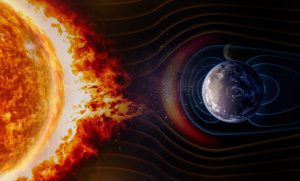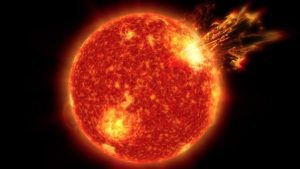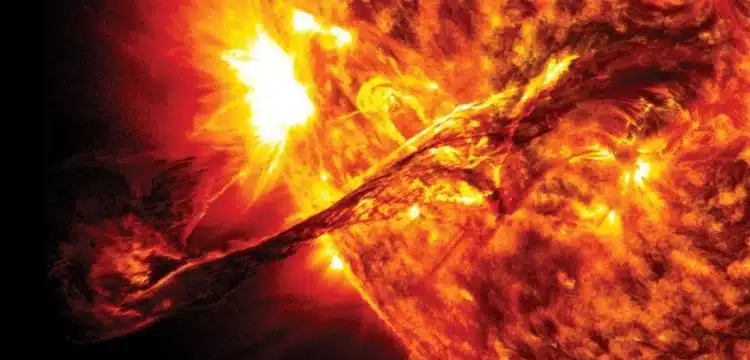[vc_row][vc_column][vc_column_text dp_text_size=”size-4″]A solar storm occurs when disturbances in the Earth’s atmosphere occur as a result of Sun-related events, particularly solar flares. These flares are emitted by the Sun and can have an impact on anything they come into contact with on our planet.
A solar storm occurs when disturbances in the Earth’s atmosphere occur as a result of Sun-related events, particularly solar flares. These flares are emitted by the Sun and can have an impact on anything they come into contact with on our planet.

The severity of such a broad internet failure would have catastrophic ramifications for the contemporary world, culminating in billions of dollars in daily losses worldwide. Scientists at the space agency, on the other hand, are working to prevent such a disaster by launching the “Parker Solar Probe” in 2018, which will function as a continuous observer of the Sun. This expedition allows them to research and prepare for the effects of a solar storm on the planet’s infrastructure.
So the issue is, how probable is this envisioned “internet apocalypse” to occur?
Here’s what we know so far.
Also Read: Is Mohammad Amir Getting British Nationality to Play IPL?
What Are Solar Storms and How Do They Affect Us?
A solar storm occurs when disturbances in the Earth’s atmosphere occur as a result of Sun-related events, particularly solar flares. According to NASA, the Sun gets more active about the halfway of an 11-year cycle and then progressively slows down. Solar storms get more intense and strong as the Sun becomes more active. While the frequency of these storms varies, the more strong ones can affect satellite operations, radio broadcasts, and internet connections.

What’s Going On With The Sun Right Now?
Since December 2019, the Sun has been in Solar Cycle 25, the 25th 11-year cycle since record keeping began in 1755. The National Weather Service initially expected that peak sunspot activity would occur in 2025, with overall cycle activity classified as “fairly weak.”
However, recent studies indicate that the cycle has accelerated quicker than projected. The peak may now occur as early as the end of this year, as we’re already seeing an unusually high number of sunspots and solar events, such as the enormous geomagnetic storm that created auroras from the UK to California in March. Furthermore, analysts believe that we may see far more severe consequences than previously anticipated.
 [/vc_column_text][/vc_column][/vc_row]
[/vc_column_text][/vc_column][/vc_row]











